Monthly Archives: March 2025
Day 1- The Arrival to Madrid
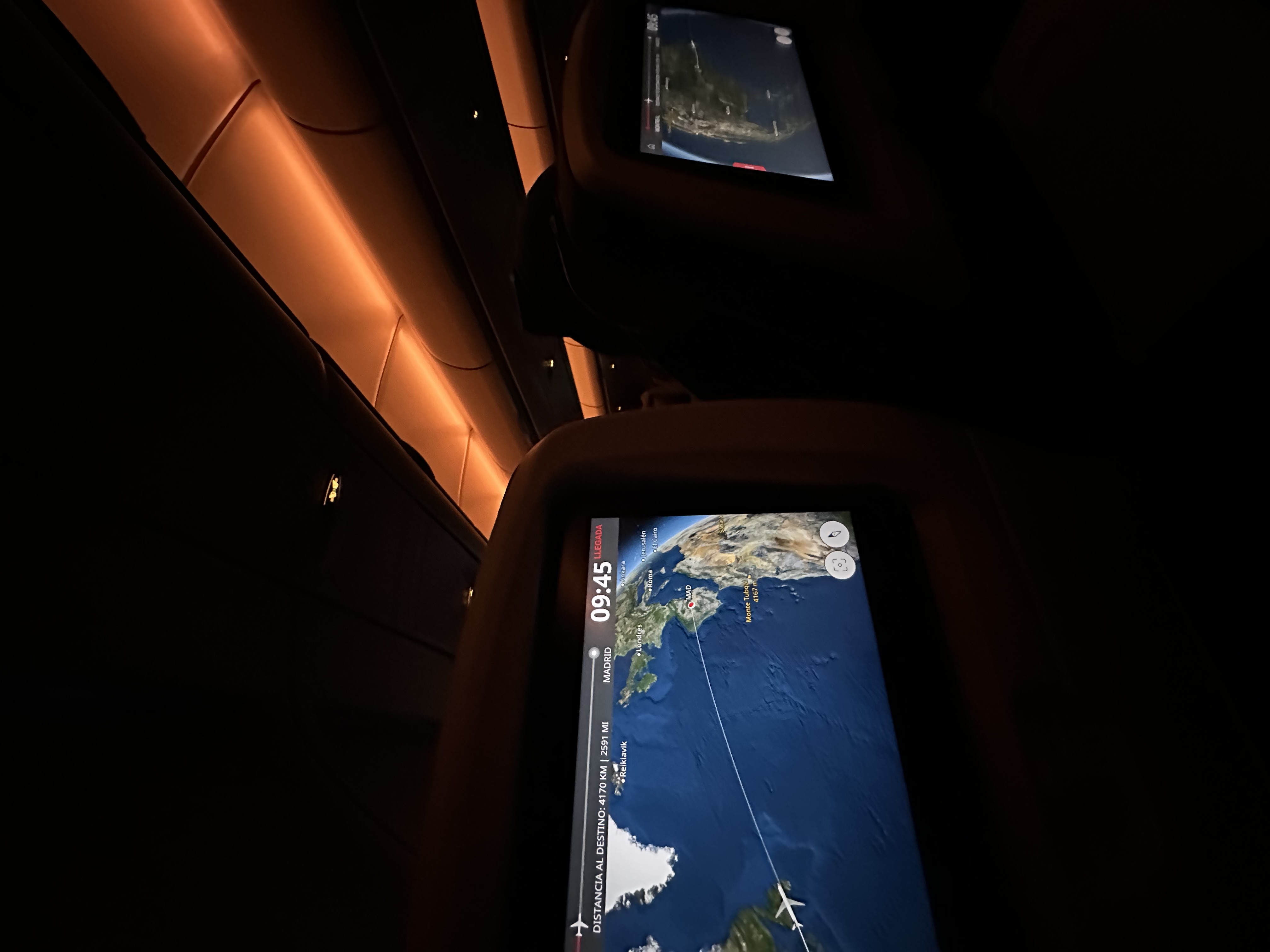

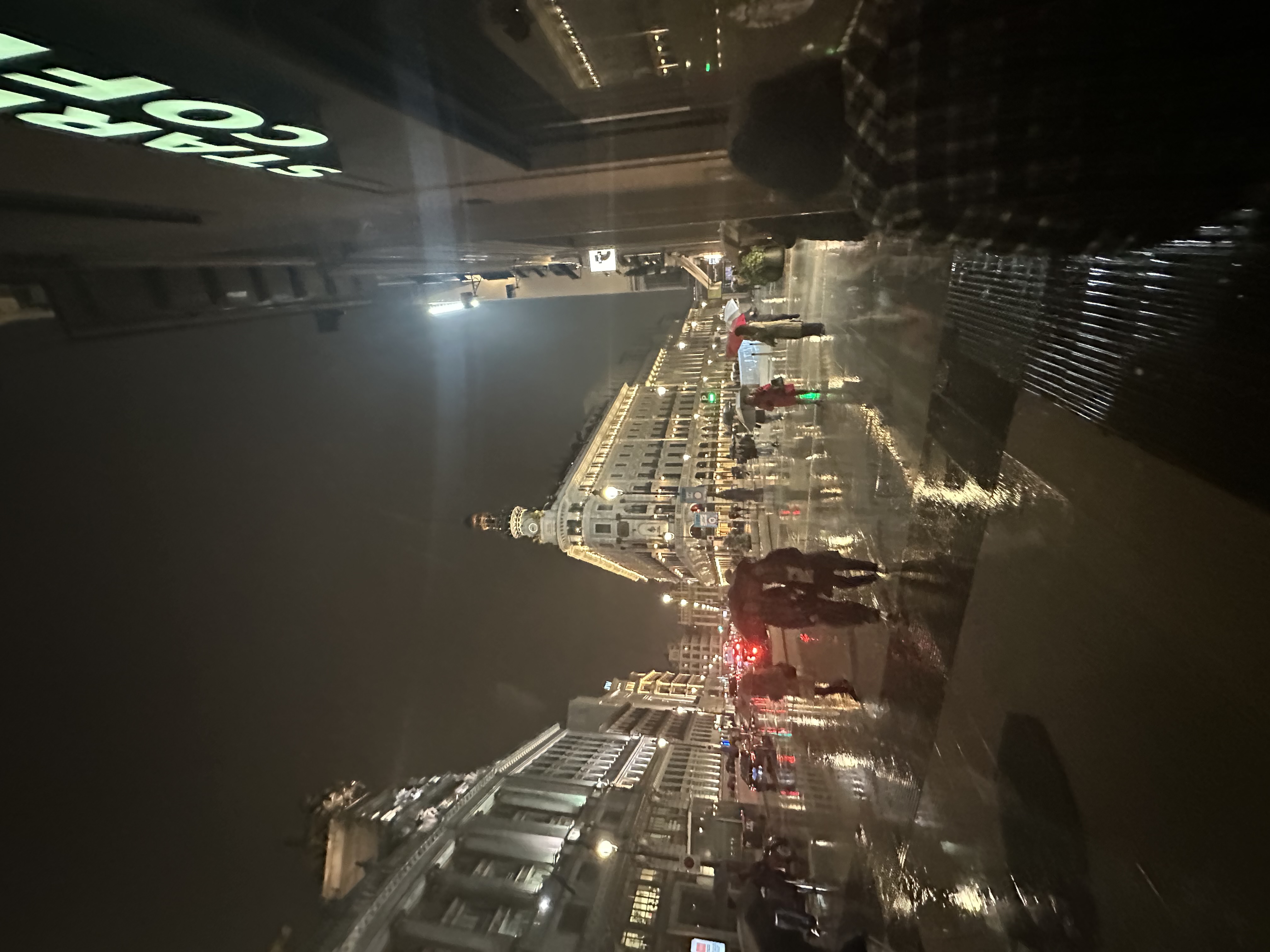
Day 2: Museo Reina Sofía, Flea Market, Parque de El Retiro, and Plaza Mayor, by Patrick Connelly
On the first full day in Madrid, Sunday, March 9th, the group began the day by enjoying the hotel’s outstanding breakfast buffet. This is the best hotel breakfast I’ve ever had: freshly squeezed orange juice, flavorful scrambled eggs, Spanish tortillas, churros, sliced ham, nicely cut fruit, honey straight from the comb, and more insane foods, including pastries. I definitely took advantage of the free breakfast over the week.
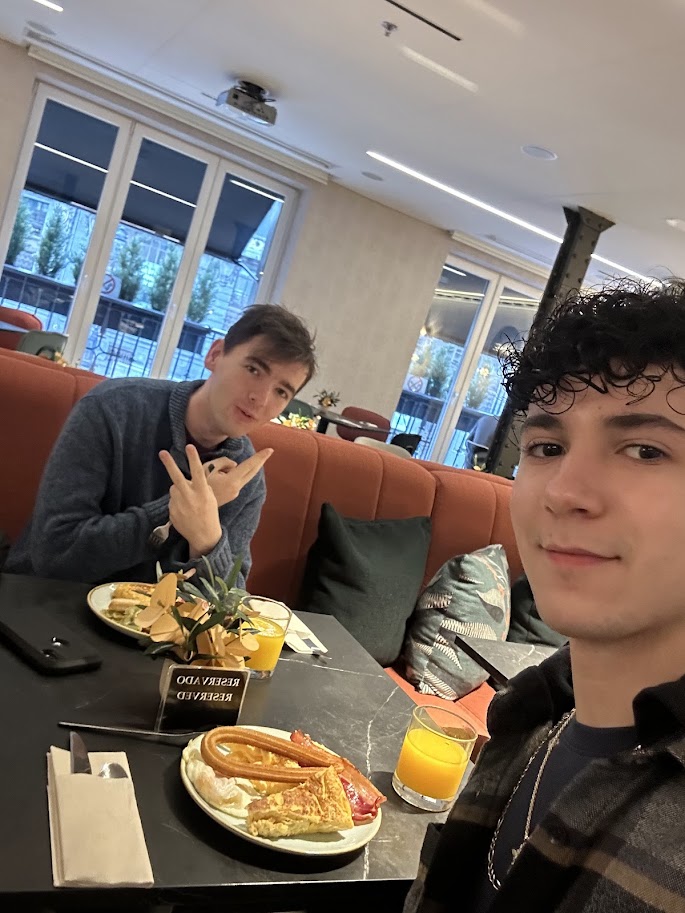
After enjoying a delicious breakfast, the group met in the hotel lobby, where we walked together to the metro. It was fascinating to experience the insanely efficient and effective metro system Spain has. In only a couple stops, the group only had to walk less than five minutes to reach the Museo Nacional Centro de Arte Reina Sofía. In this very large art museum, the group all gathered around the Guernica, painted by Pablo Picasso, who was famous for this anti-war message. To be honest, I would’ve had no idea what this painting was supposed to mean if it hadn’t been for others explaining it to me. I also observed a lot of Spanish Civil War propaganda in the museum, which was cool since many of the class presentations, including mine, were about the civil war. Connecting my previous knowledge of Spain’s history with the paintings and sculptures I saw was fascinating.
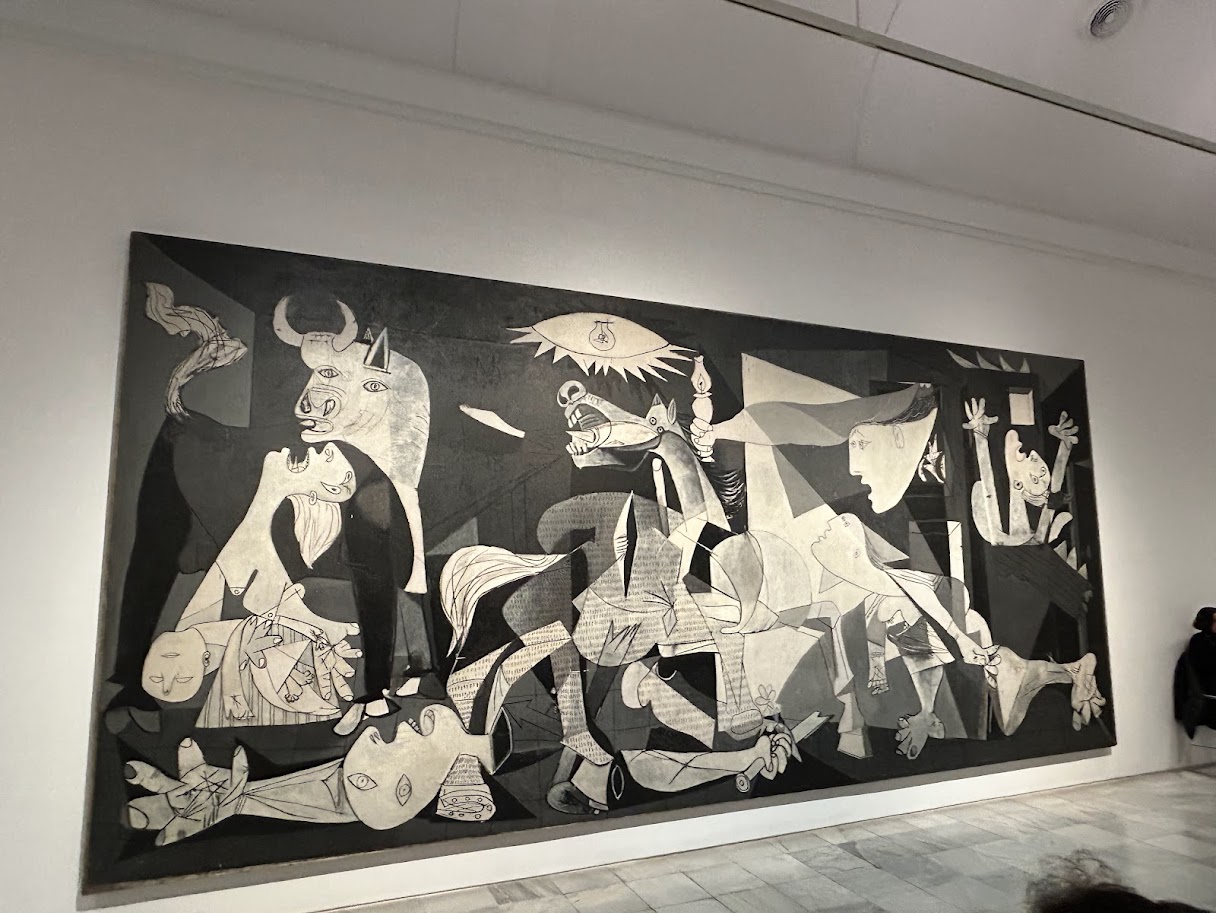
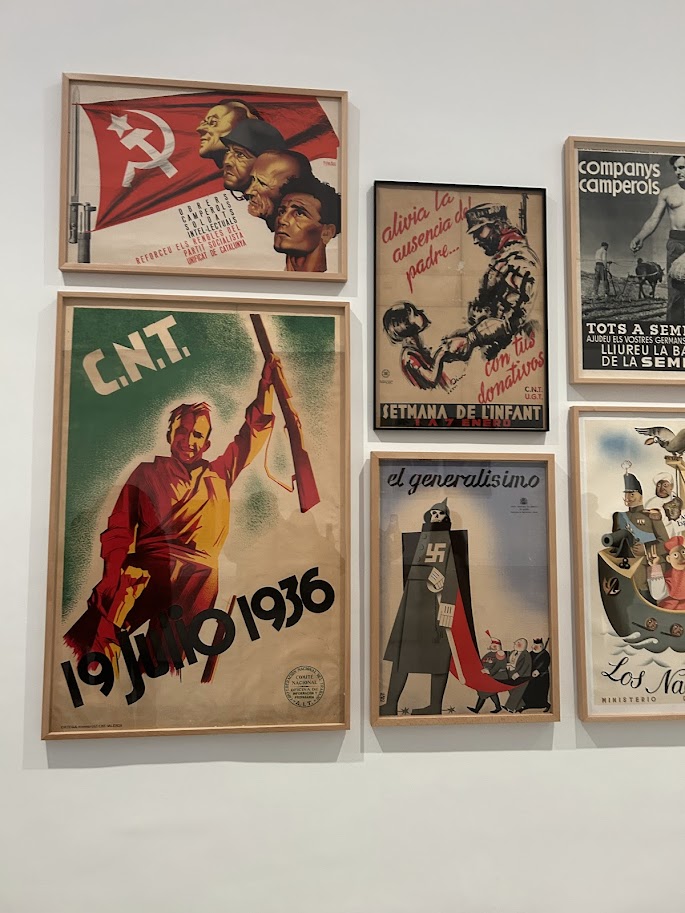
After exploring the museum, the group met outside and started walking to the flea market (which only happens on Sundays). After being warned about pickpocketing, the group could explore the market. Some of the guys and I went to watch live music played at the flea market. Five guys in total played music and sang, each with a different instrument. Throughout the flea market, so many other items were being sold, from cheap leather jackets to gold chains. Luckily, I speak Spanish because the local vendors don’t speak much English, making communicating much easier. After exploring almost every shop on the street, I ended my shopping with a new silver chain, key chains, and magnets.
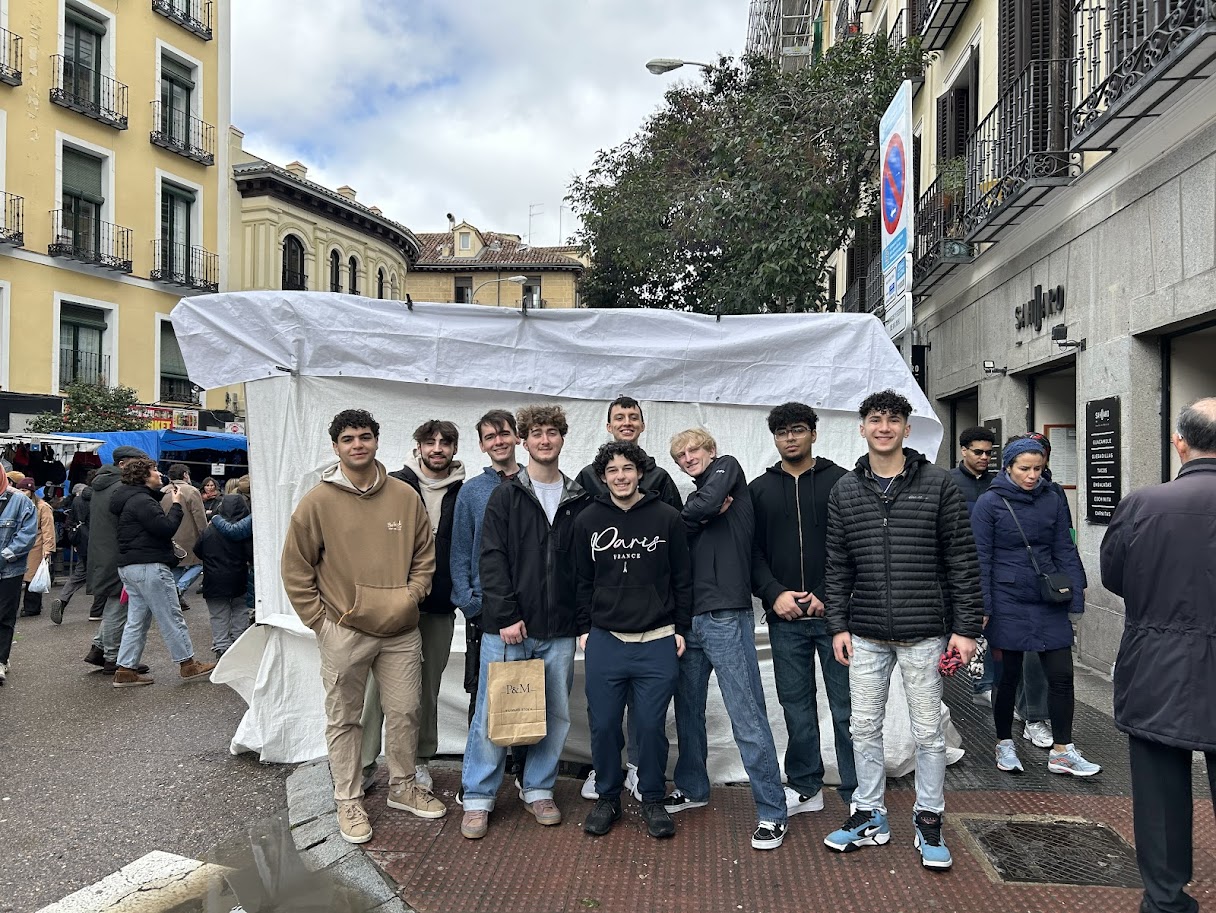

At the end of the flea market, a couple of new friends and I met some police men who were willing to take a picture with us, and they gave us recommendations for food in the area. Following one of their recommendations, we went across the street to a restaurant/tapas bar (not exactly sure what this place was), and we ordered steak, which came with two fried eggs and french fries. Because of James Blick, the YouTuber the group watched to prepare for Spain, I knew to ask for “agua de grifo,” which every restaurant is legally required to serve for free (Spain’s tap water is ranked 15th best globally and considered very clean). Upon asking, the waiter sighed and repeated to the counter, “agua de grifo.” He was thinking, “These tourists know too much.”
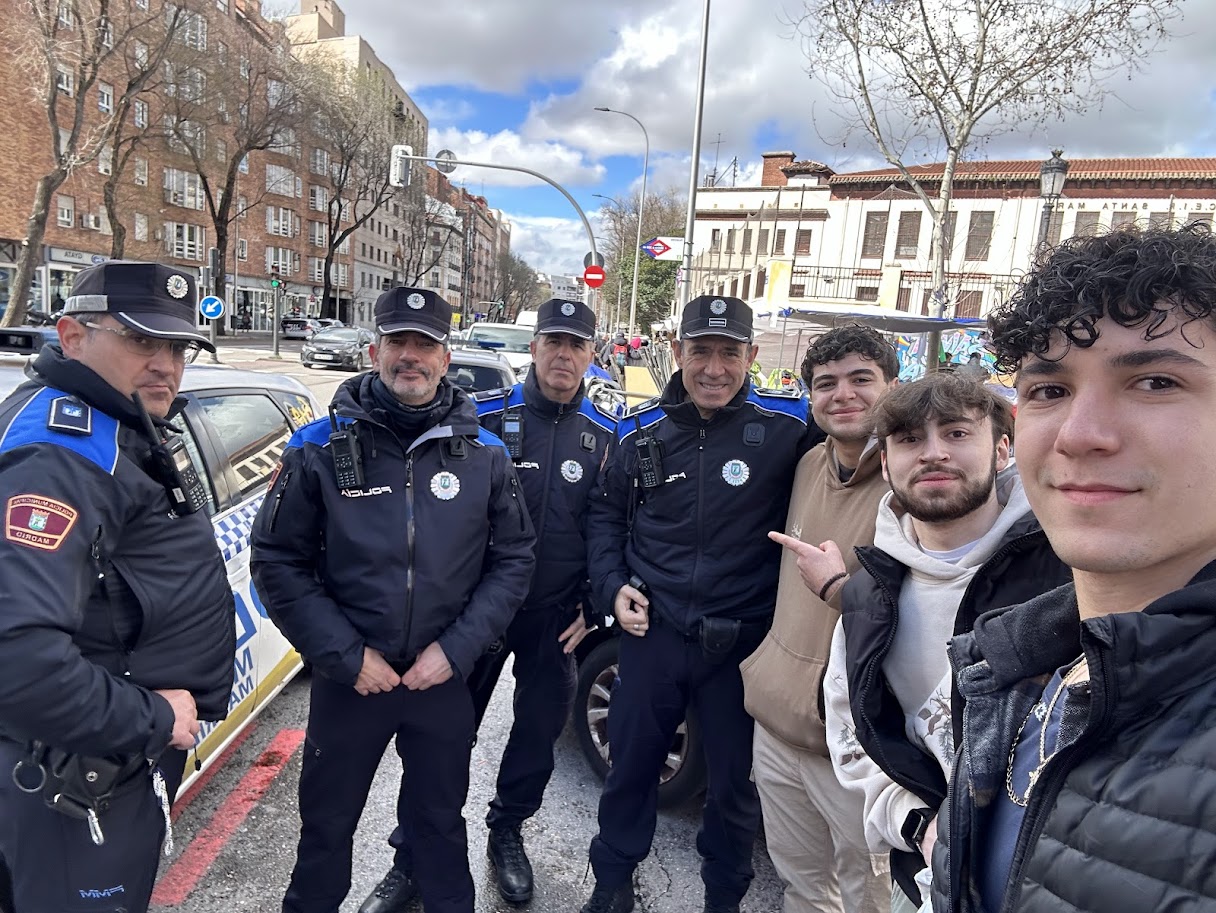
After eating the delicious meal, I walked around Spain and stopped at any location I thought was cool. When walking, my friends and I stopped to take a picture in front of another famous museum, Museo Del Prado. We never went inside, but the pictures from out front came out nice. The people I asked to take our picture were very friendly and took some nice photos.
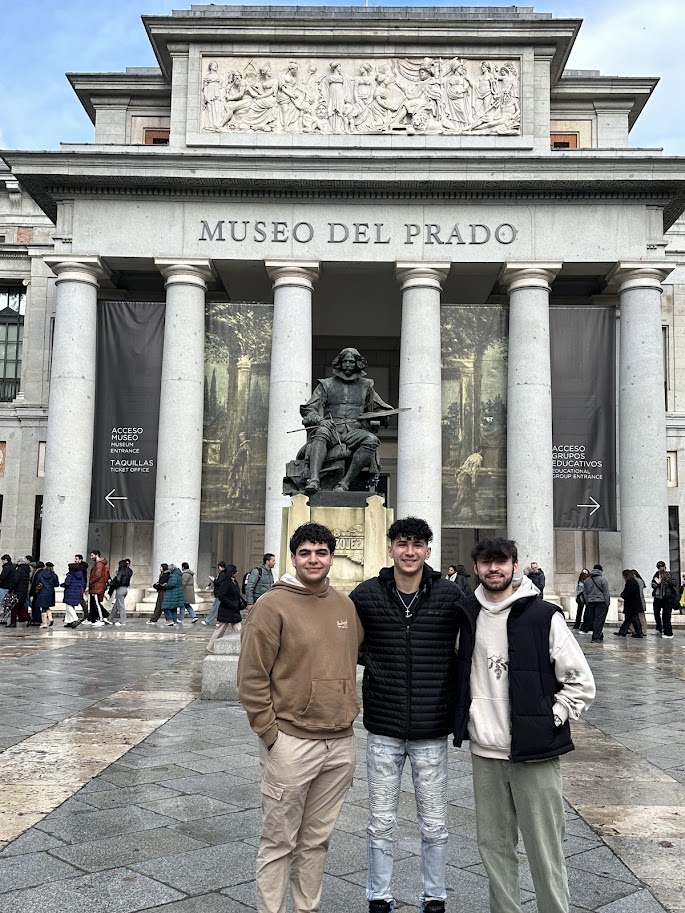
I continued walking, and then my friends and I decided to check out the large park, Parque de El Retiro. We hopped on a bus and got off very close to the park. The air was very fresh in this area, and a break from cigarette smoke was much appreciated. I noticed the landscaping was incredibly professional as the trees were perfectly groomed and kept. Continuing through the park, I reached the large pond where a large monument stood.
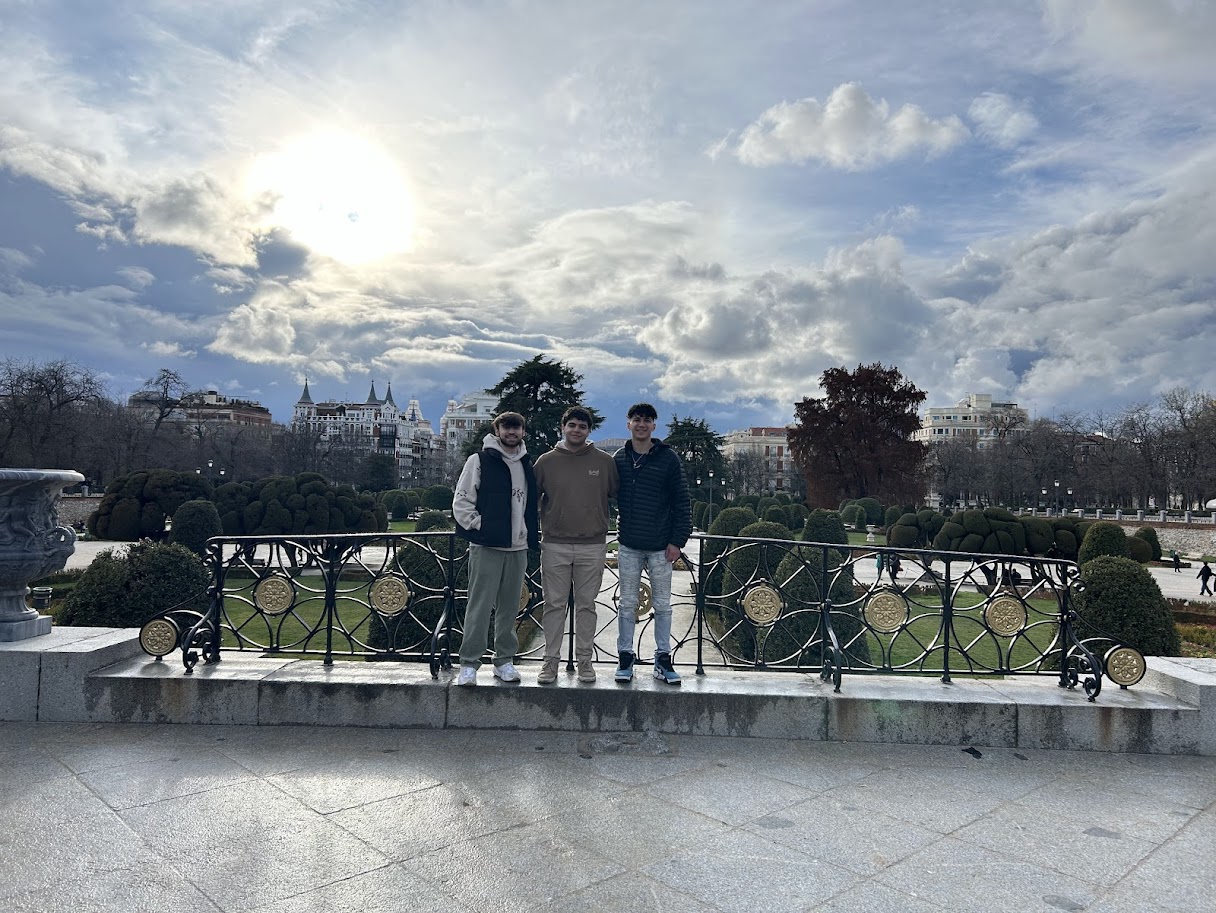
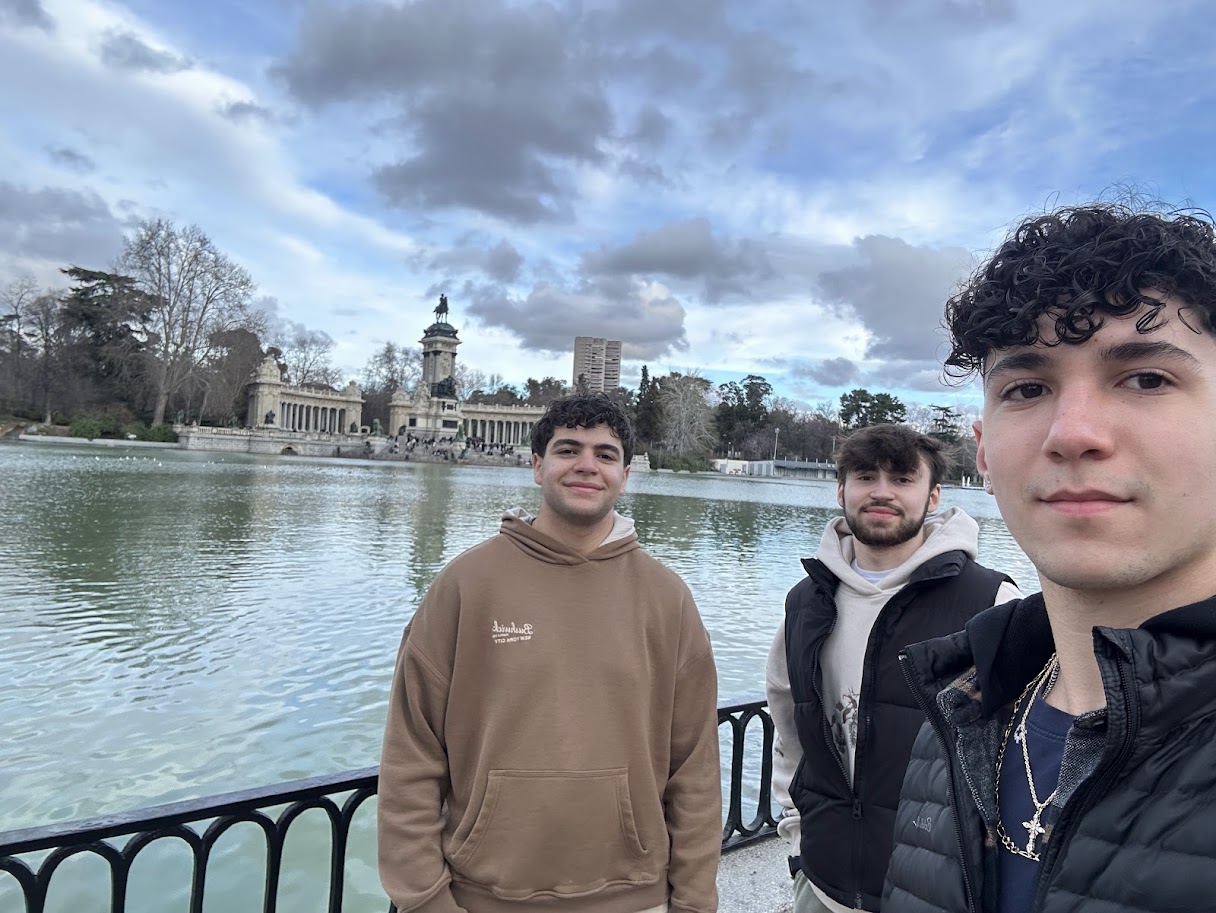
After taking the metro back to the hotel, I went out for dinner at a Mexican restaurant. The tacos were delicious, but the portion sizes were tiny, especially considering the cost. The waitress recommended a watery drink with cinnamon, so my friends and I ordered it to try. After finishing dinner, I continued walking around Madrid when I encountered Plaza Mayor. There were some cool little souvenir shops and restaurants/places to eat in this plaza. We found an ice cream place not too far away to enjoy the rest of the night.
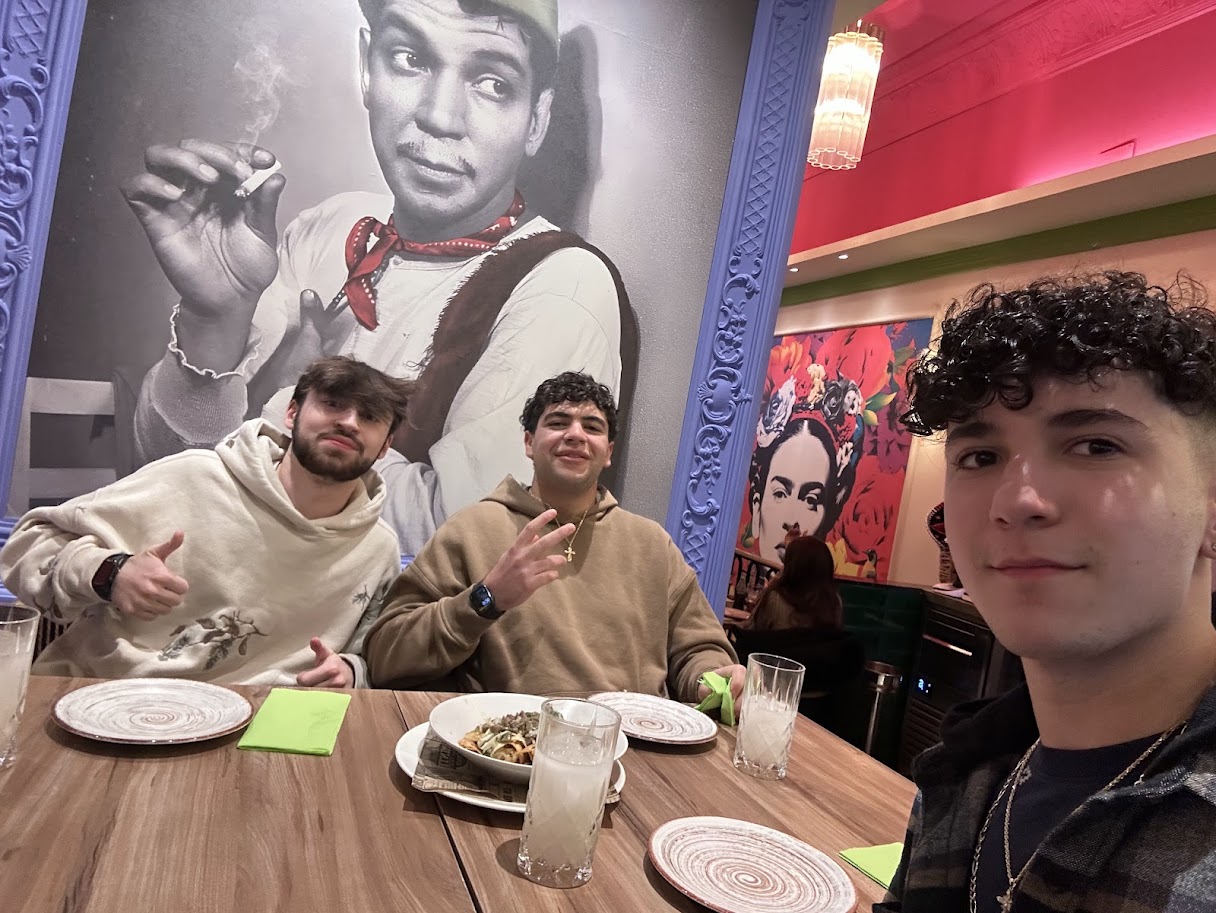
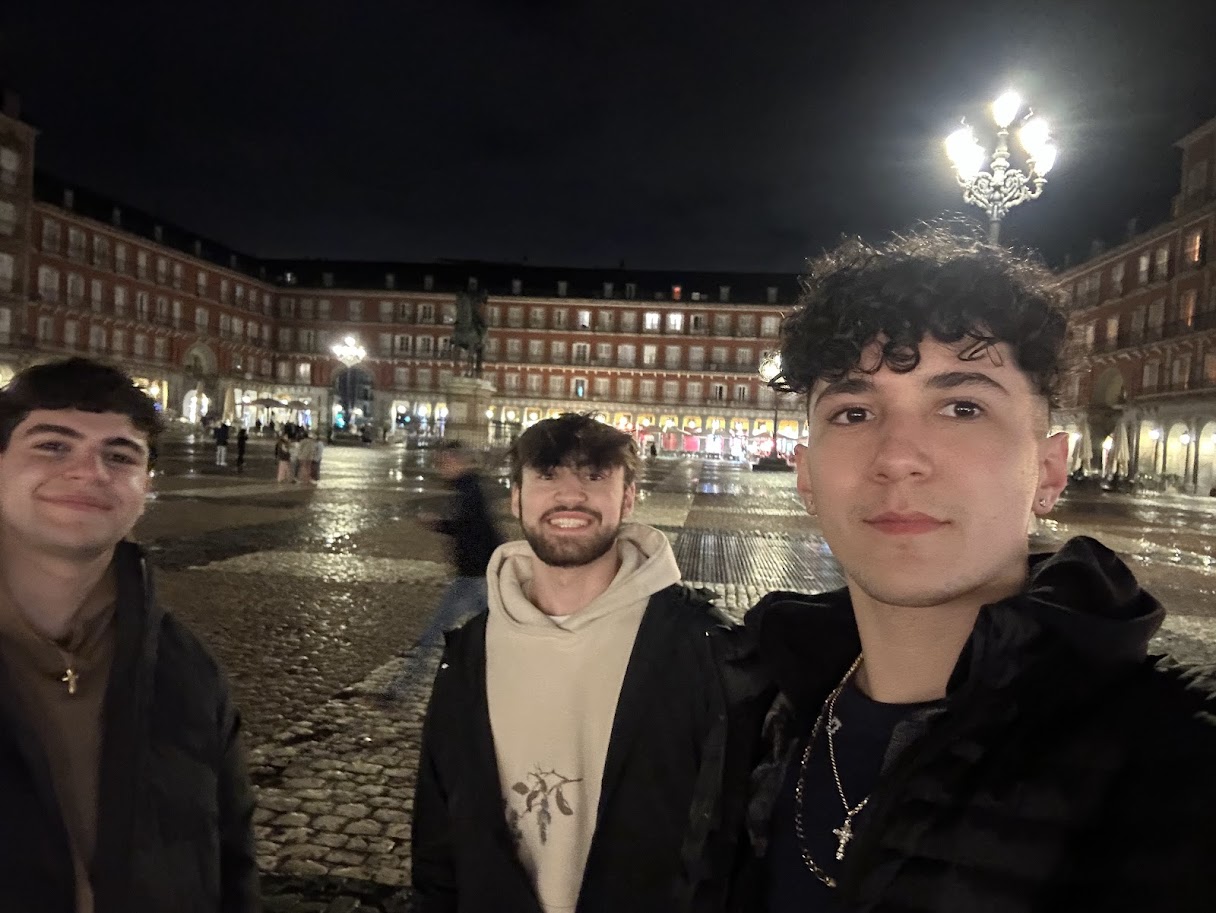
This day was packed with incredible experiences in Madrid. I walked over twenty thousand steps that day, and my legs were feeling it. Luckily, the hotel beds were comfortable, so I could get a good night’s rest before the next adventure.
Day 2: The Reina Sofia Museum, Flee Market, and More in Madrid!
On March 5th the Spain study abroad group and I made our way to the Reina Sofia Museum for the first stop of our eventful day. The Reina Sofia Museum holds many impressive pieces of Spanish art by famous artists such as Pablo Picasso, Salvador Dali, and Joan Miró. I enjoyed being able to freely roam and explore the museum as I was able to see almost all the artwork. All the artwork in the museum was amazing to see, but the most interesting piece by far was Pablo Picasso’s Guernica.

Guernica is a response to the bombing of the Basque town of Guernica during the Spanish Civil War. It is now considered a symbol of suffering and a condemnation of violence. It was amazing to see this piece of art in person and to soak in its importance in Spain. The Reina Sofia Museum was one of my favorite stops on the whole trip and I am excited I got to see it on day two.
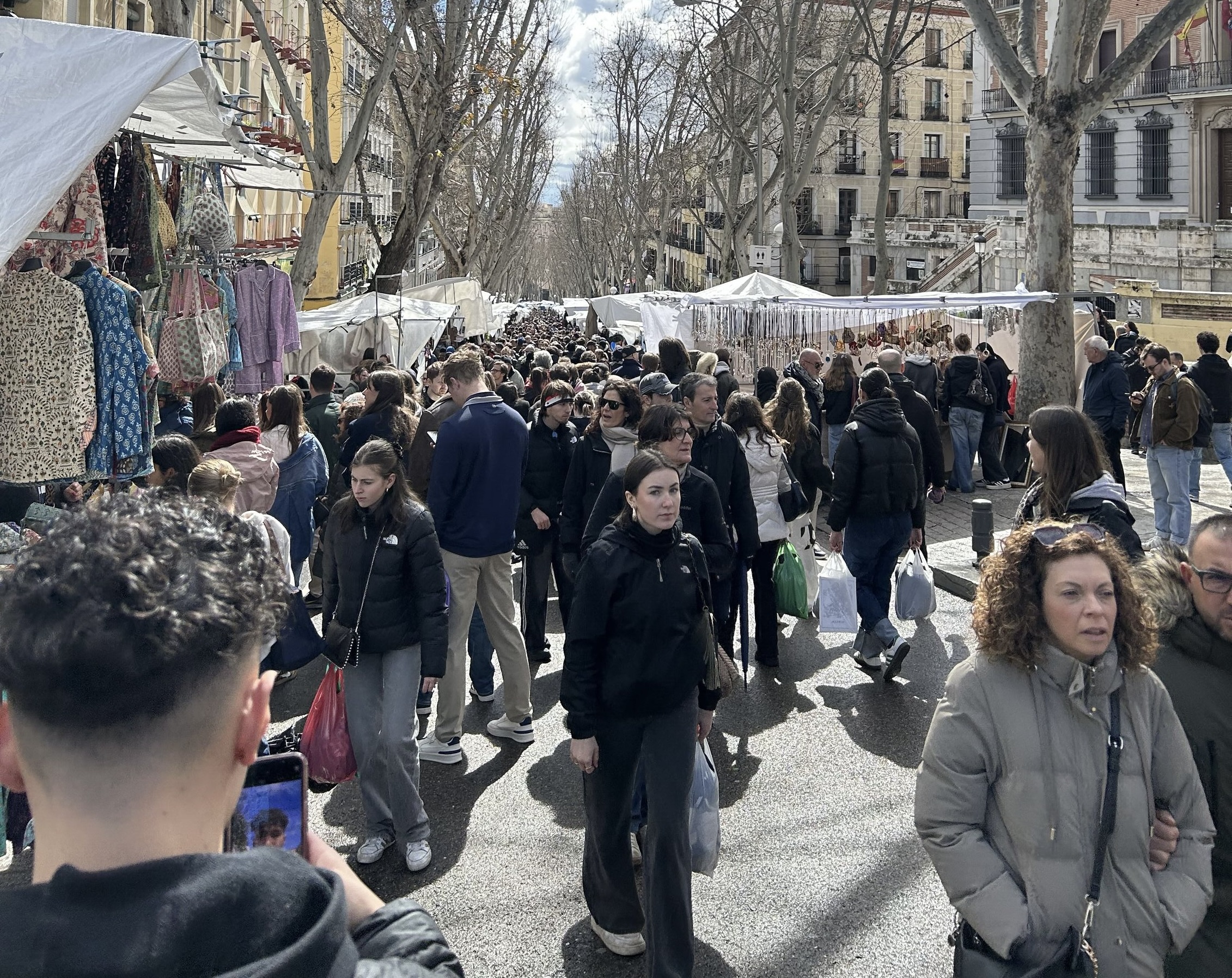
After the Reina Sofia museum we made our way to El Rastro Flea market. We went as a group but then split up at the flea market and had the rest of the day to ourselves to explore the market and do whatever else we wanted to. The flea market, which is held every Sunday, was incredible. There were thousands of people gathered to buy basically anything you could think of. I remember looking at jackets, shirts, sunglasses, and I even bought some bracelets and necklaces for a very good price. Most of the sellers were very friendly and kept honest prices even with us being tourists. It was a great experience overall and is something I recommend everybody who goes to Madrid to do.
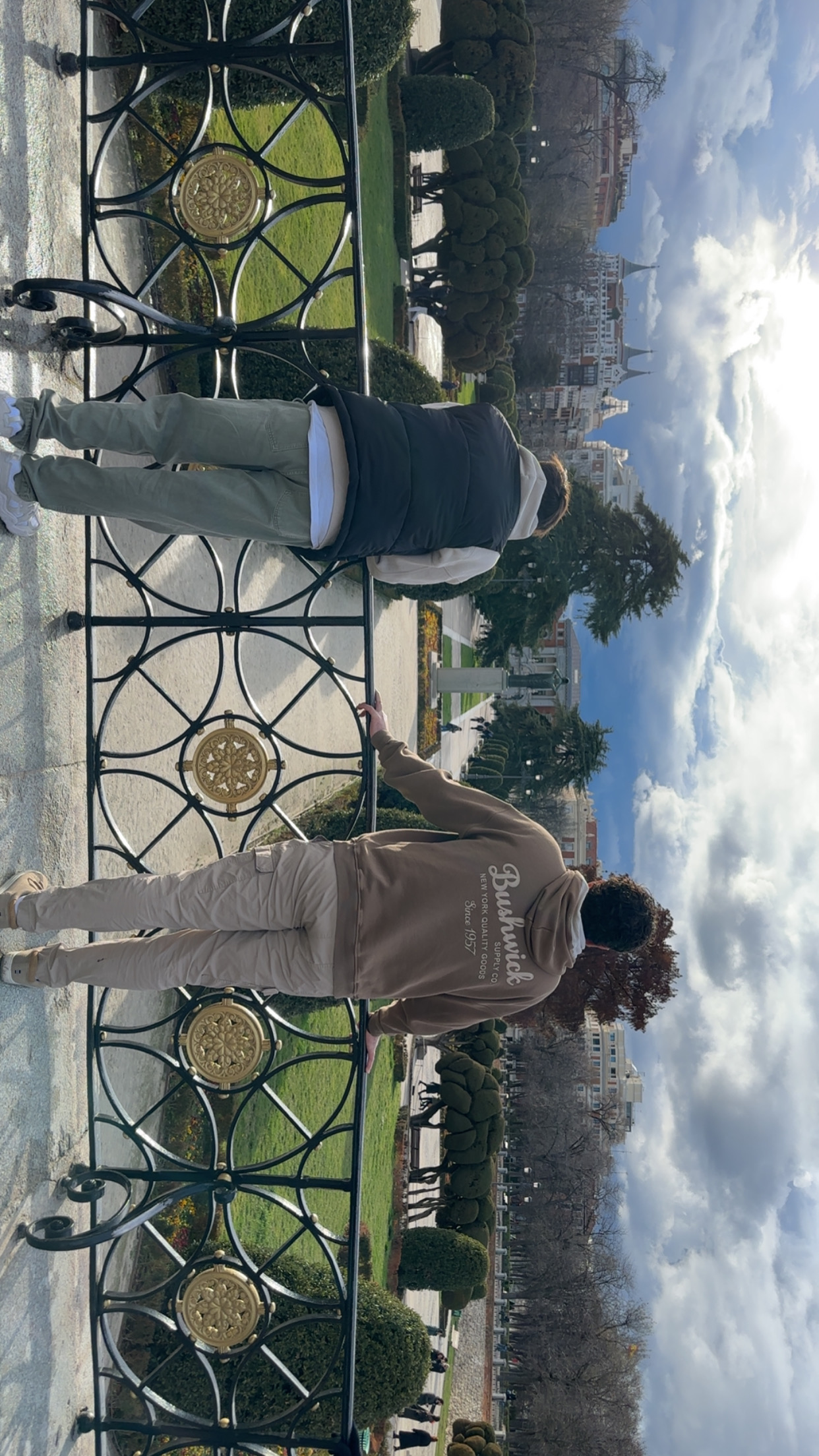
After the flea market a couple friends and I walked to El Retiro Park. This park was one of the nicest places to walk around in Madrid. It had many scenic views and tons of beautiful greenery. We walked around the whole park which took us over an hour with many picture breaks. My favorite part was the lake at the heart of the park. An interesting fact about the park is that it was originally the gardens of the Buen Retiro Palace for King Phillip IV. Overall, I am happy I got to see and explore the park as it was a very breathtaking experience.

Lastly, after resting a little at the hotel, my friends and I went to see Plaza mayor. Plaza mayor is a major public space in the heart of Madrid and is in the center of the capital. The plaza was stunning in person. I really enjoyed walking in it and seeing all the different shops and restaurants. It was also nice that we went at night time when the whole plaza was lit up. My friends and I decided to get some gelato ice cream near plaza after which was delicious. All the food and sweets, especially the ice cream, in Madrid tasted fresh and delicious. Overall, our second day in Madrid was a very eventful and fun day with a lot of walking.
March 10th: Toledo For the Day
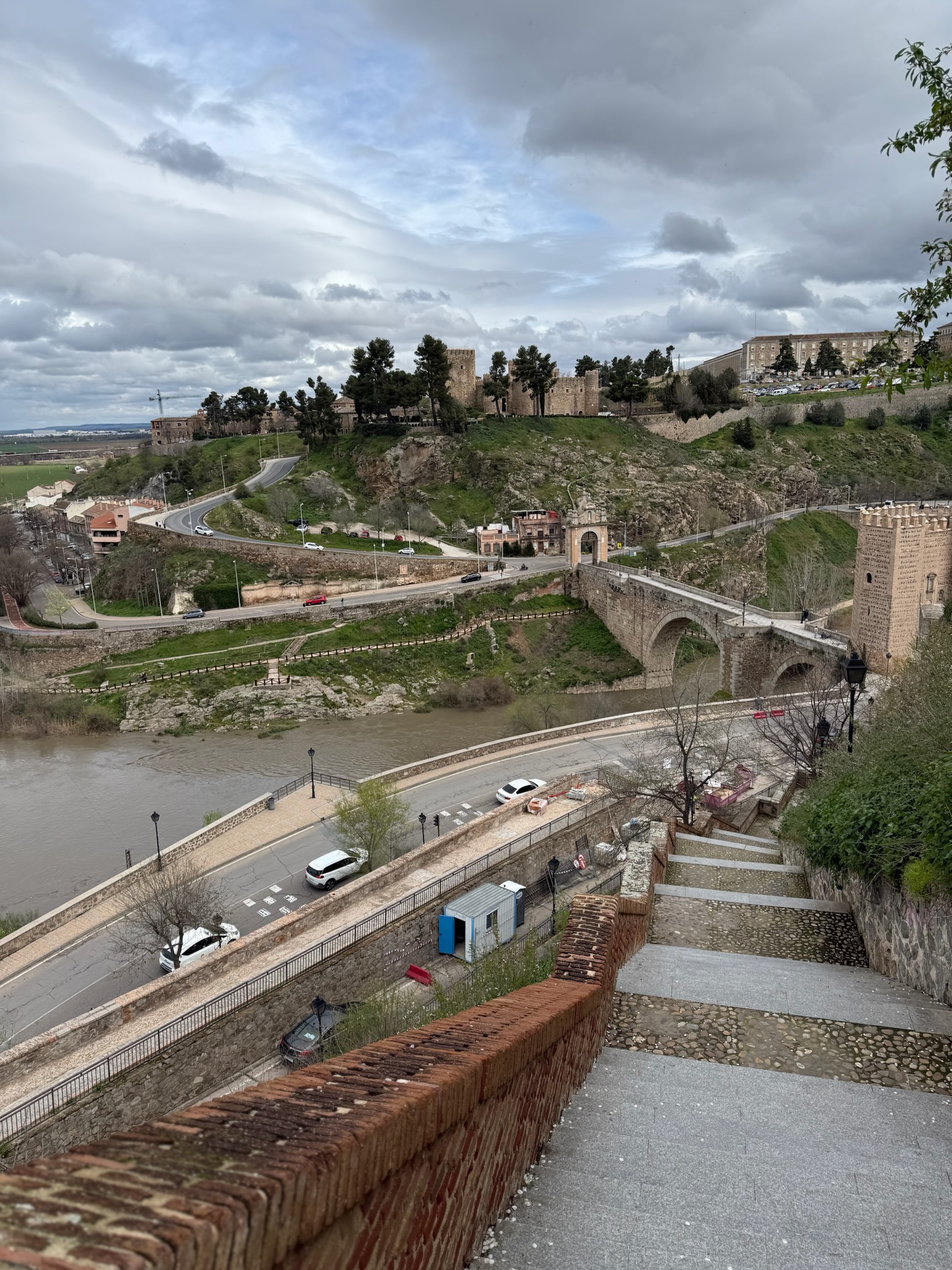

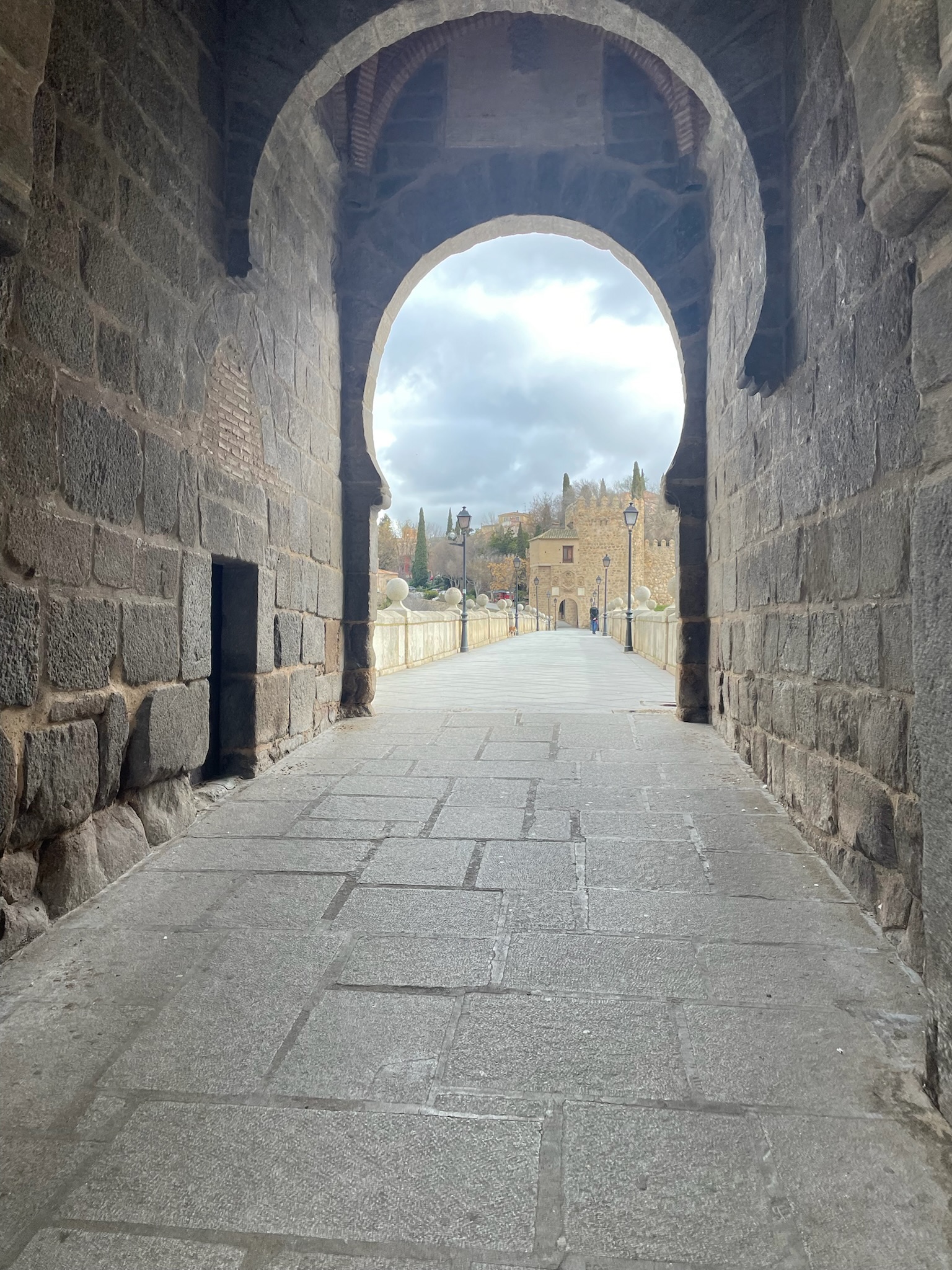
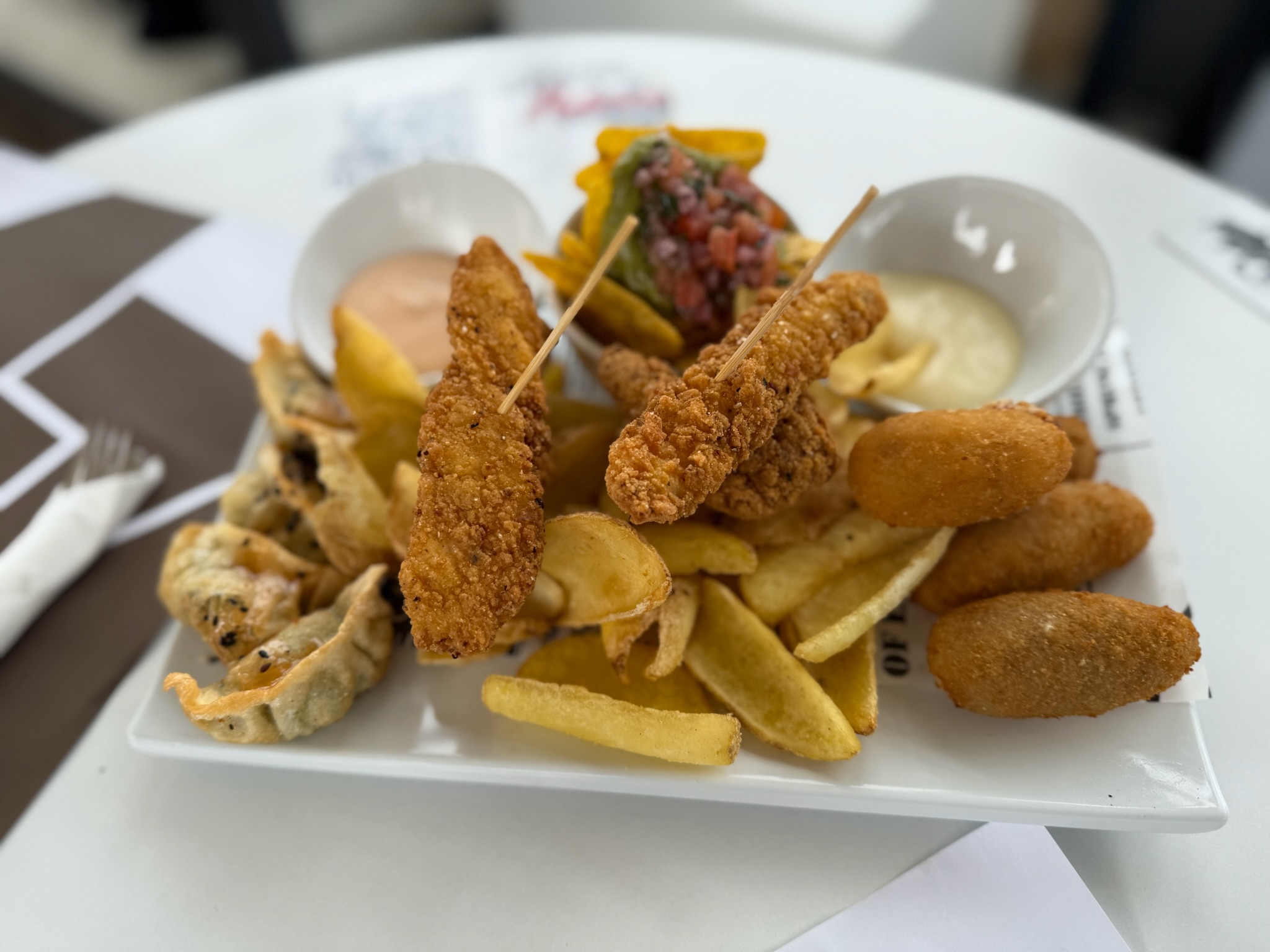

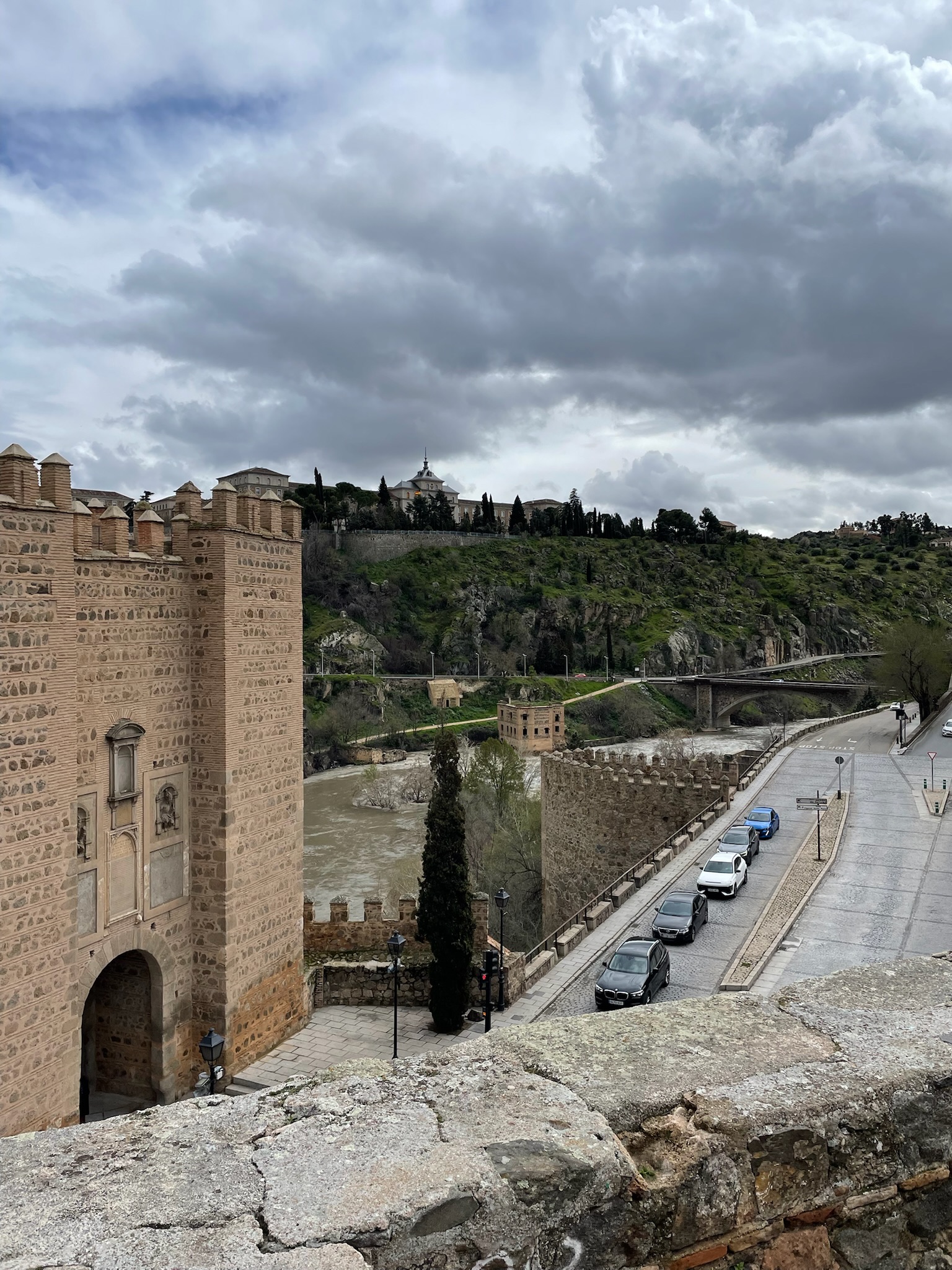
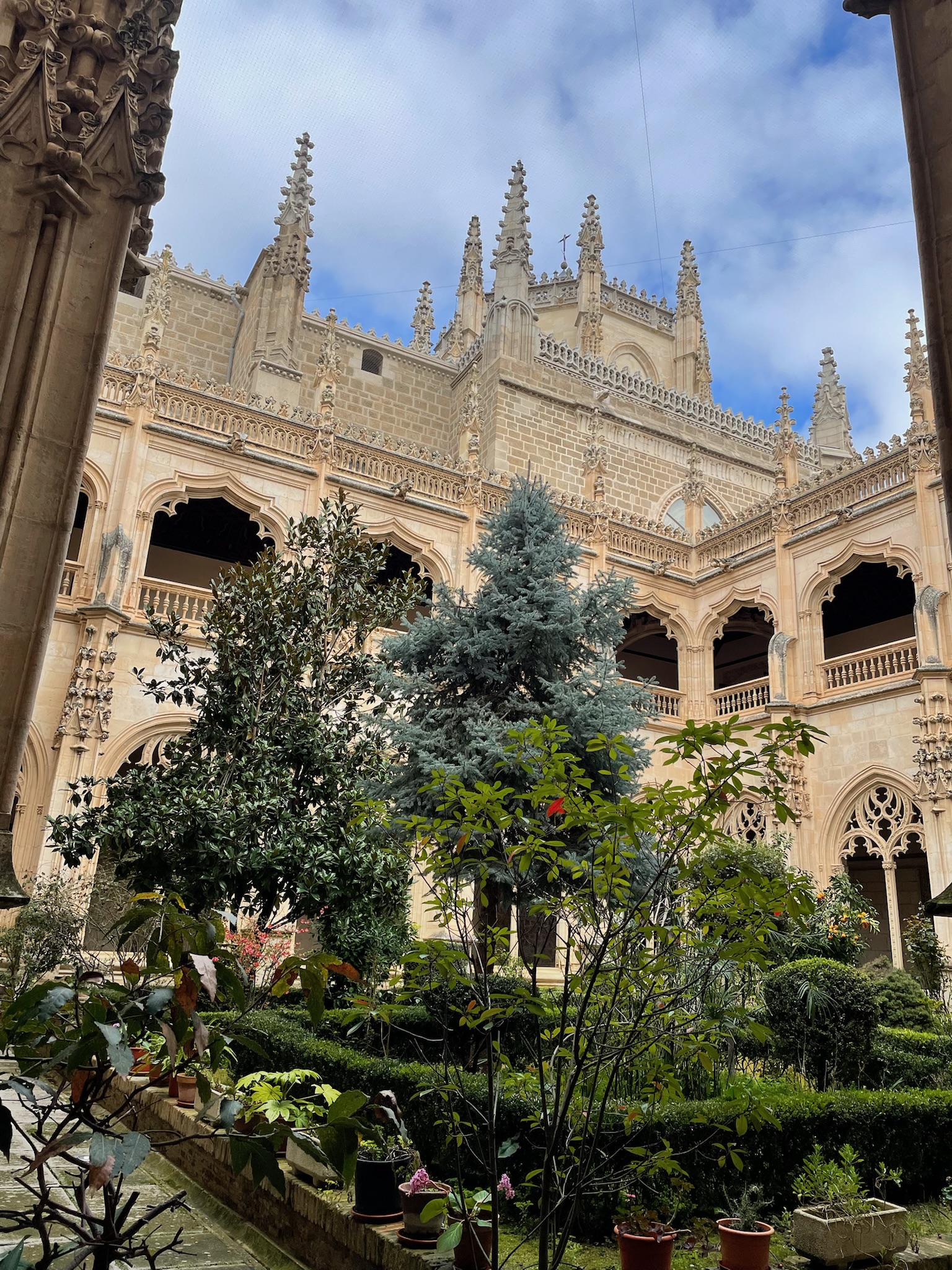
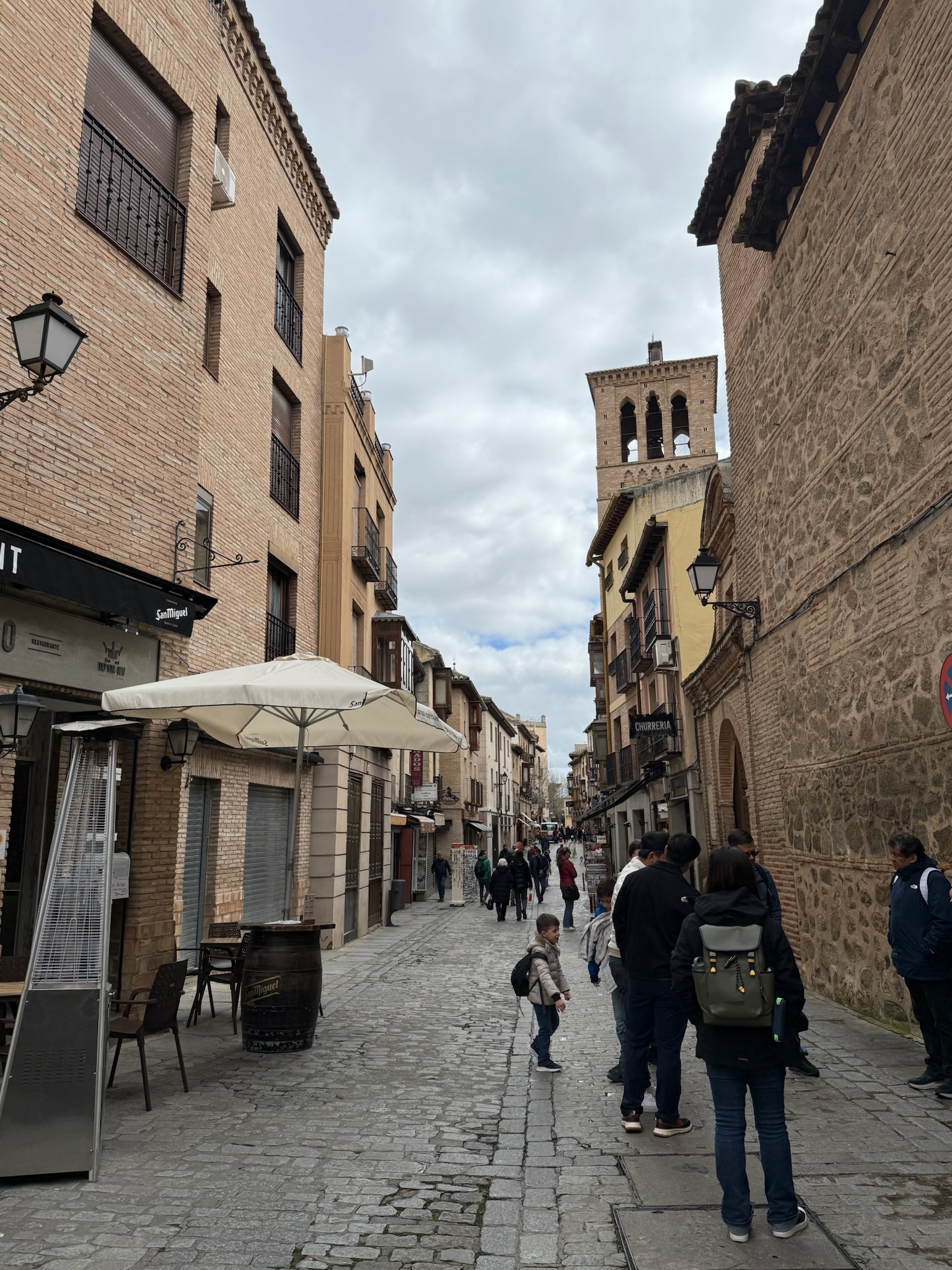
It’s hard to believe how much beauty and history can be packed into one place, but that’s exactly what Toledo was. My study abroad experience in Spain is something I’ll remember and talk about for the rest of my life. With that in mind, I can confidently say that Toledo was one of the top highlights of this trip, at least for me. I’ve genuinely been looking forward to sharing how this day went.
The day began early. After a quick breakfast at our hotel, Hotel Regina, the group gathered and left around 9:30 AM. We got on the bus for what turned out to be a smooth, one-hour ride from Madrid to Toledo. The first thing I noticed as we were driving out of Madrid and approaching Toledo was the change in landscape, from the big city vibes with its distinct architecture to Toledo with its beautiful scenery. Toledo’s landscape was like nothing I’d ever seen before. Overlooking the Tajo River, the terrain is hilly and rocky. The architecture is among the most beautiful things I’ve ever seen. It features a mix of Gothic, Renaissance, Moorish, and Jewish styles.
March in Spain can be an interesting time when it comes to the weather. You quickly learn that Spain has bipolar weather, and it’s never predictable. That day, visiting Toledo, we were incredibly lucky. It was cloudy, but luckily there was no rain. The clouds only added to the beauty of the place and made the trip even more memorable.
Our first major stop was at the Monastery of San Juan de los Reyes. We honestly had one of the best tour guides. She explained the history of the monastery and answered all the questions we had. She pointed out some of the symbolism in the artwork found in the amazing Gothic structure, which was ordered to be built by the Catholic Monarchs. This monastery is home to a few Franciscan monks. Sitting there, you feel a sense of peace that allows you to slow down, pause, and reflect. One of my favorite parts of the monastery was the garden in its heart, which added so much charm to the place.
From there, our tour guide walked us through the city’s aesthetically pleasing streets. Toledo’s layout felt like a maze, but that’s part of its beauty. The narrow alleys and unexpected turns revealed something new about the city. I was especially impressed by how cars were squeezing their way through the streets, even with our large group walking they still found a way to get through.
Walking through these narrow streets led us to our next destination: the Cathedral of Saint Mary of Toledo. As we approached the cathedral, I found myself in awe. Without realizing it, I had drifted away from the group as I stopped to take pictures of the breathtaking building. This cathedral is similar to the Monastery of San Juan in that it also features French Gothic architecture. During our guided tour, I learned that the cathedral was once used as a mosque. It was hard to wrap my head around how massive the interior was and how detailed the artwork was that made the place what it is.
The main chapel was easily one of the highlights of the cathedral. Looking at it, you can see that the back of the altar is divided into two panels and five rows, and it is finished with a beautiful crucifix. To finish the tour, we walked through the Sacristy, which was adorned with incredible artwork, especially the painting of St. Mary on the ceiling of the room. The space was also filled with other paintings such as: Christ, St. Peter, St. Paul, and more.
To finish the day in Toledo, a few of us decided to make our way to Terraza del Miradero, a rooftop restaurant that offers stunning views of the city. We never expected lunch to be another highlight of the day, but it truly was. Getting there was quite the workout, we faced what the group called the “never-ending staircase.” We couldn’t help but laugh as we climbed higher and higher. On the way, of course, we had to stop for some photos to look back on and reminisce about later. Enjoying the food alongside the view made the experience all the more worth it.
Finally, we walked around a bit more, soaking in the last views of Toledo, taking pictures to remember the day, and then made our way back to the bus for the ride back to Madrid.
Saturday, March 8th: Arrival
After attending my two Friday classes and doing some last-minute packing, I went to Boston Logan International Airport. The group’s flight itineraries were different, so a few other participants in the program and I had a night flight and did not arrive in Madrid until later Saturday. We had a layover in Lisbon, Portugal, where I used Euros for the first time, and I tried European matcha, which I found to be delicious. After many hours of travel, we arrived at the Adolfo Suarez Madrid-Barajas Airport. We claimed our baggage and then located the Metro. The Metro is fast and reliable. I liked how often trains came, so if you missed one you did not have to wait a long time for the next to arrive. It was slightly tricky to navigate at first, but with some assistance, we were able to find our way to Hotel Regina. The hotel was clean and modern, and the staff was welcoming, as well as helpful. Although rainy upon arrival, the city was still breathtaking. Fascinating architecture and bustling streets, there were many things to give an eye to.
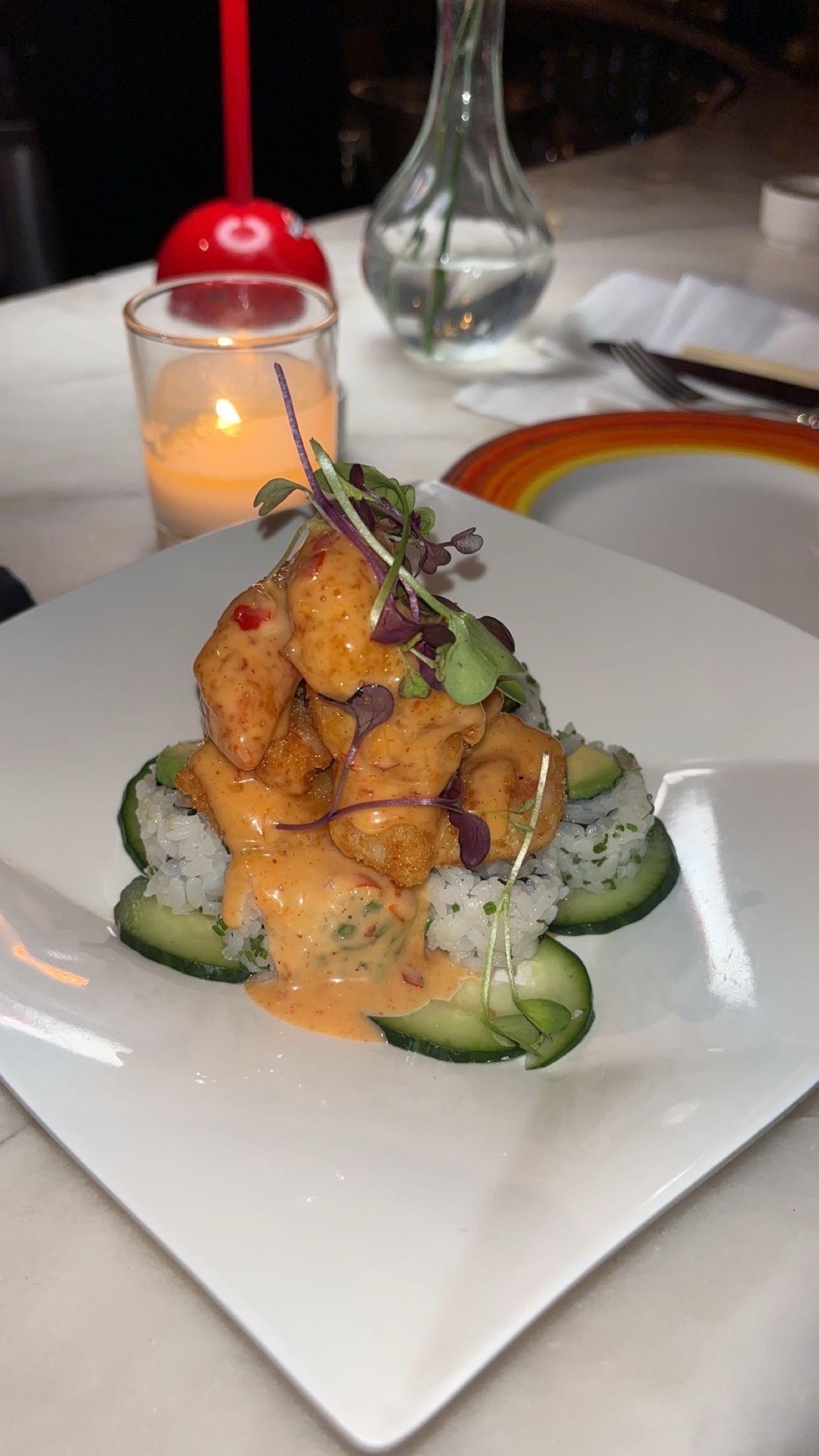
A few friends and I settled on a sushi spot by the name of ‘Le Club Sushita’ for dinner. We stuck to cuisine we were familiar with, but not to fret, we ventured out and tried some amazing Spanish cuisine later on. One of our dishes at the restaurant had prawns, which are commonly paired with sushi but also have specific significance in Spain. Prawns are featured in many Spanish dishes, including paella and gambas al ajillo. Paella is a dish that includes rice, saffron, vegetables, and seafood. Gambas al ajillo includes shrimp or prawns sauteed in olive oil with garlic. We had some delicious paella during our farewell dinner, and I found it to be a fantastic way to say our goodbyes to the city.
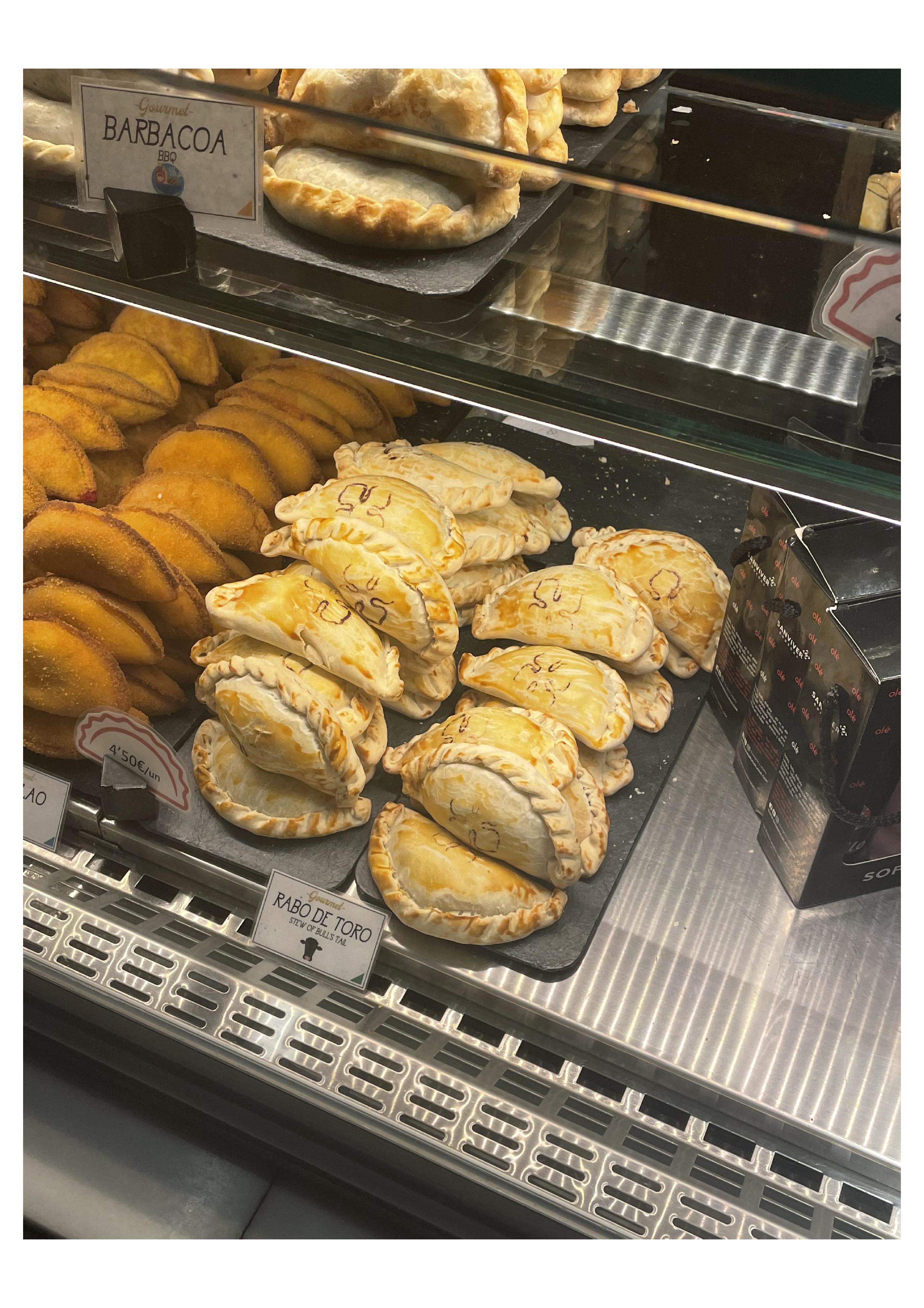
For Spanish cuisine, a favorite of mine was empanada de rabo de toro or bull’s tail empanada. Our tour guide for Las Ventas informed us that bull’s tail was one of if not the best meat in the world. I have had it previously since bull’s tail, referred to as “oxtail,” is a staple in Jamaican cuisine. Although the seasoning was a lot different, it was just as delicious. These were not the only empanadas I had in Madrid, other fillings were chicken and cheese. Empanadas are believed to have originated in the Galicia region of Spain, with possible influences from Arabic meat-filled pies. The word “empanada” comes from the Spanish verb “empanar,” meaning “to wrap in bread,” and its original fillings included seafood, which alongside prawns highlight the importance of the country’s coastal regions. As the food spread, it adapted a wide variety of fillings and dough types and eventually became a dish enjoyed worldwide. I love empanadas, and I understand why they are regarded this way.
La Plaza de Toros Las Ventas was a favorite visit of mine. It is the largest bullfighting ring in Spain, seating around 23,000 people. It was built using Mudejar-style architecture, which showcases the coexistence of Muslims and Christians, emerging in the 12th century from the Iberian Peninsula. Red brick and ceramic tiles are the main features shown. The bullring holds immense cultural and historical significance as a central venue for bullfights and other events, such as concerts. The most popular concerts have been for artists like The Beatles and AC/DC. We received a tour of the bullring and the Bullfighting Museum. The museum displayed the belongings of bullfighters that had a great impact and offered more insight into the history of the practice. The attire of bullfighters, called “traje de luces,” is visually appealing, involving striking colors and various embellishments. Photography was not allowed in the museum, but I recall being drawn to one that was a vibrant purple.
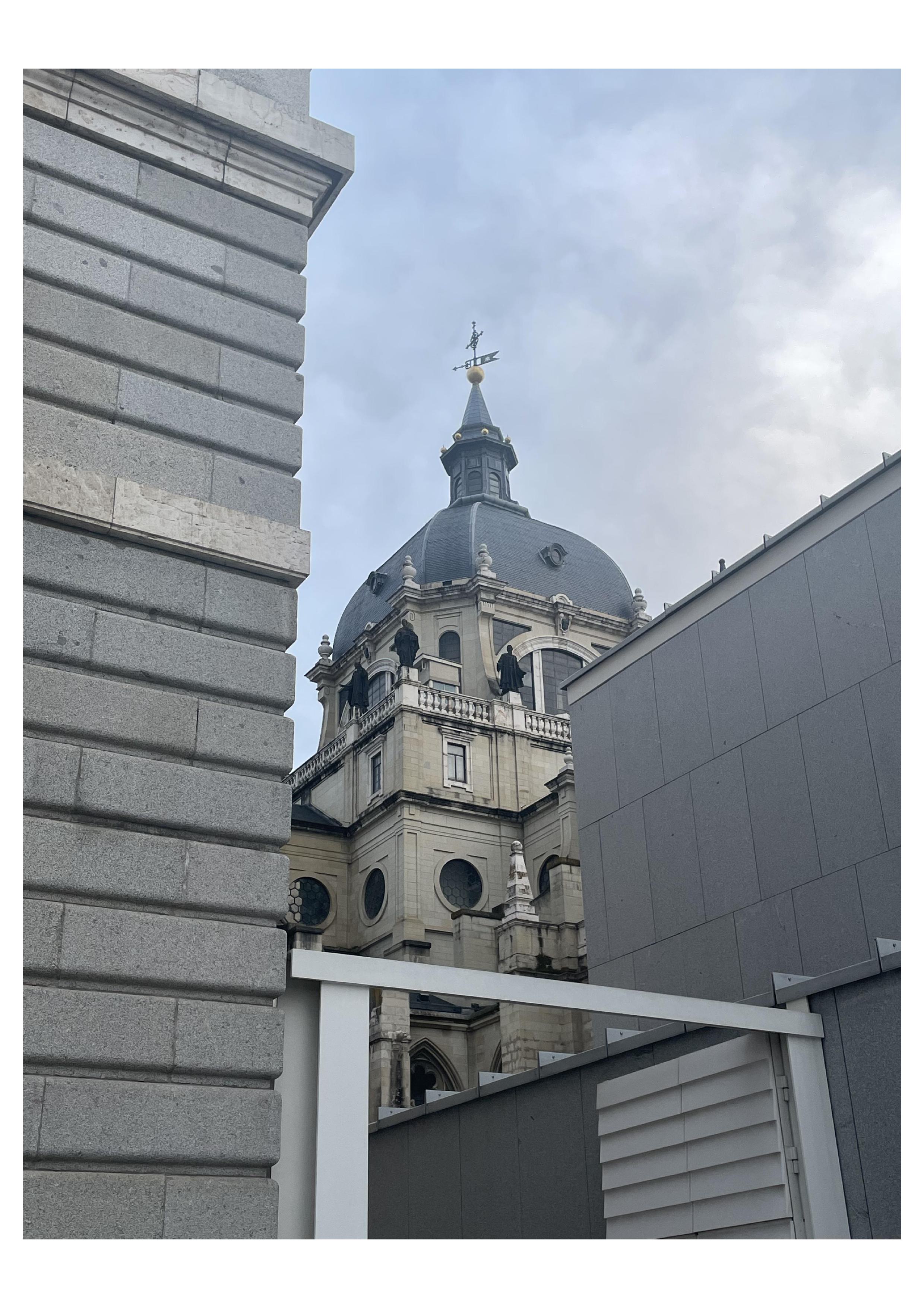

Our first day was rainy, but the sun made appearances throughout the trip, allowing us to admire the city for all it has to offer. The architecture speaks to the rich history, denoting styles that have Gothic and Baroque influences. There is also the prominent feature of balconies, which are multi-purpose, useful when viewing street life, and provide air circulation. Although my later arrival did not allow me to explore right away, I still had a great first impression. This impression carried its way through the entirety of the trip, and I can say that I had a great time exploring Madrid and other cities in Spain. The country remains on my travel list because I need to revisit it.
Day 3: Off to Toledo!
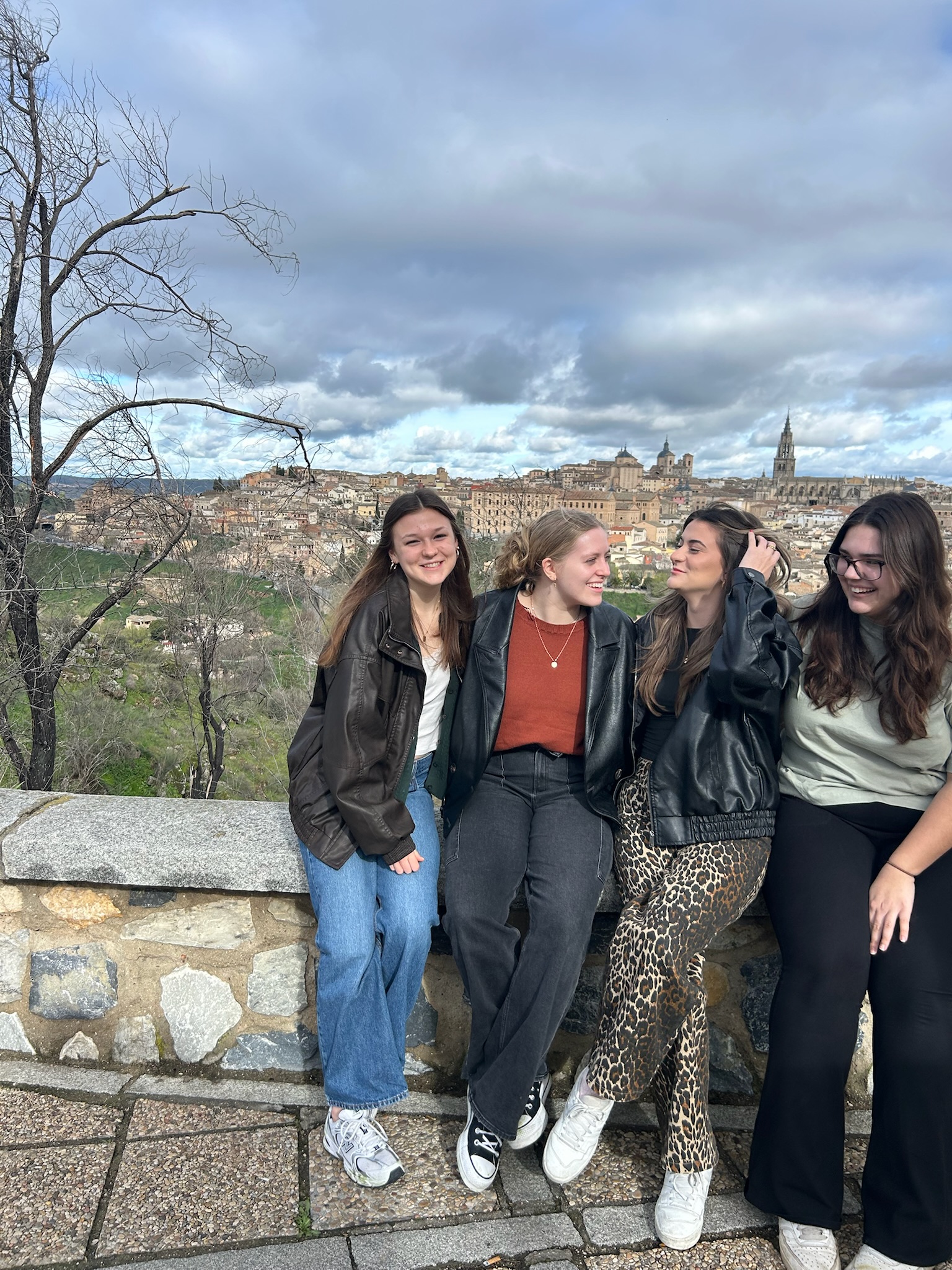
On March 10th, the UMass Lowell study abroad group travelled to Toledo to explore the area through a walking tour. The 45-minute bus ride was worth it in order to see the impeccable view of the small town. The architecture was something I didn’t have the opportunity to see yet, being older houses in shades of tan and terracotta. The mountainous landscape had a surplus of greenery, ranging from simple shrubbery to olive trees. When our bus came to a hault, our tour guide brought us to our first feature; the Monastery of San Juan de los Reyes.
The Monastery of San Juan de los Reyes
The Monastery of San Juan de los Reyes was our first stop, and it immediately captivated me. The intricate details of its facade were awe-inspiring. As we stood in front of the monastery, I marveled at the statues of monks and royal symbols adorning the building’s surface. These elements were not mere decoration but carried deep historical significance. The chains hanging on the facade, remnants from the time of the conquest of Granada, told a story of Christian captives who were once freed by the Catholic Monarchs, Ferdinand and Isabella. The chains were placed on the building as a tribute to their liberation and the divine protection they believed guided the monarchs.
Upon entering, the monastery continued to impress with its stunning architecture and art. The inside was adorned with exquisite paintings, and the layout was peaceful, embodying the tranquility often associated with religious spaces. What stood out the most to me was the orange tree planted in the central courtyard. It wasn’t just a decorative plant; it was a thriving, living tree that has been maintained by the monastery’s inhabitants for centuries. This simple yet striking feature was a reminder of the continuous life within the monastery, despite the many centuries it has stood.
The Cathedral of St. Mary

Next, we ventured to the Cathedral of St. Mary, another awe-inspiring site. The cathedral is a marvel of Gothic architecture, and the experience of walking through it felt like stepping back in time. The most striking feature inside was the large window in the turret, which allowed natural light to pour into the cathedral. It was surrounded by ornate paintings depicting idyllic landscapes and sculpted cherubs, which added to the overall serene atmosphere of the cathedral. This window, being an essential source of light, was an ingenious solution to the challenges faced by the architects of the time. The lack of modern electrical lighting at the time meant that natural light was a vital part of the building’s design, and this window served as a stunning example of the beauty that can come from practical needs.
As we continued to explore the cathedral, we encountered more intricate artwork, including a series of paintings that reflected the diverse cultural influences of Toledo. The city’s unique history as a meeting point for different cultures (Christian, Jewish, and Muslim) is evident in its architecture and art. Each piece we saw seemed to tell a story, adding layers of meaning to the cathedral’s already rich history.
Exploring Toledo
After our guided tour, we had some free time to explore the city on our own. My friends and I immediately decided to try one of Toledo’s most famous delicacies: marzipan. This almond-flavored treat, popular in Spain, is particularly well-known in Toledo, where it has been made for centuries. Toledo’s marzipan shops remain open throughout the year, offering the soft, slightly sweet confection. It was unlike any marzipan I had tasted before; subtle and perfectly balanced in sweetness. It quickly became one of my favorite foods in Spain.
As we wandered through the city, we couldn’t resist popping into various souvenir shops, most of which were filled with Don Quijote memorabilia. Toledo’s connection to Miguel de Cervantes’ famous novel is strong, and there were numerous items related to the story. We explored the narrow, winding streets, which seemed to lead us into another world with every turn. However, all good things must come to an end, and our time in Toledo was soon over. We boarded the bus back to Madrid, where an unexpected event occurred. On the way, a moment of road rage resulted in a minor car crash. Thankfully, no one was seriously injured, and we were able to safely walk the final stretch back to our hotel.
Ending the Day

Toledo was the perfect place to celebrate my birthday, which I shared with my study abroad group. After returning to Madrid, I decided to take a break from the tapas-heavy Spanish cuisine that had been a staple of our meals. A few of the girls and I ventured to a lovely Italian restaurant, where I indulged in some of the most delicious gnocchi I’ve ever had. The meal was a welcome change from the rich, meaty dishes of Spain. But no dinner is complete without dessert, and we ended the evening with ice cream. The flavors were different from what we have back home in the United States, yet they were far superior in taste and texture.
The day in Toledo was unforgettable, filled with historical landmarks, rich cultural experiences, delicious food, and, of course, the joy of celebrating my birthday abroad. It was the kind of day that not only enriched my understanding of Spain but also deepened my appreciation for the country’s history and traditions. Though our time in Toledo was short, it left a lasting impression that I will carry with me for years to come.
